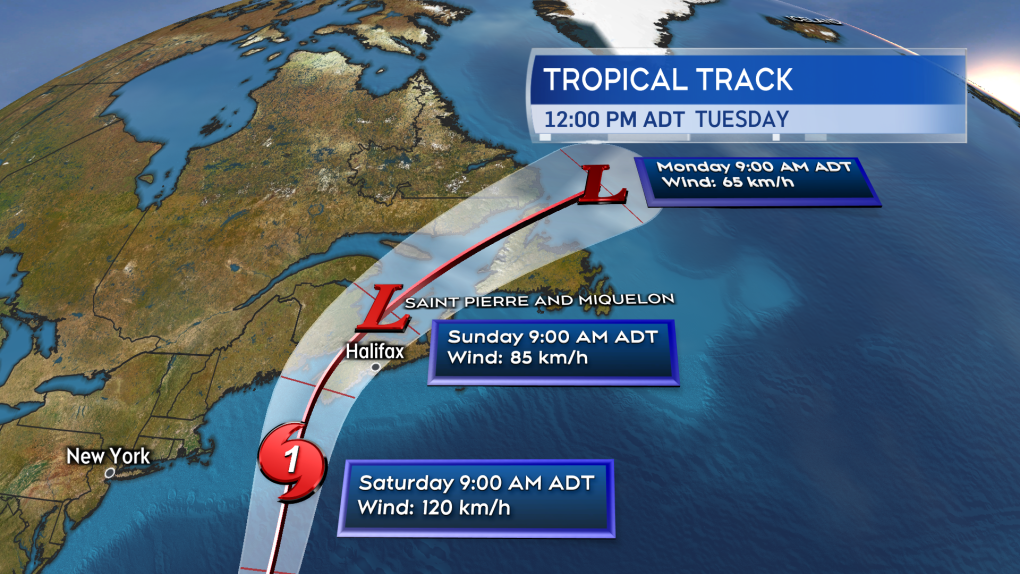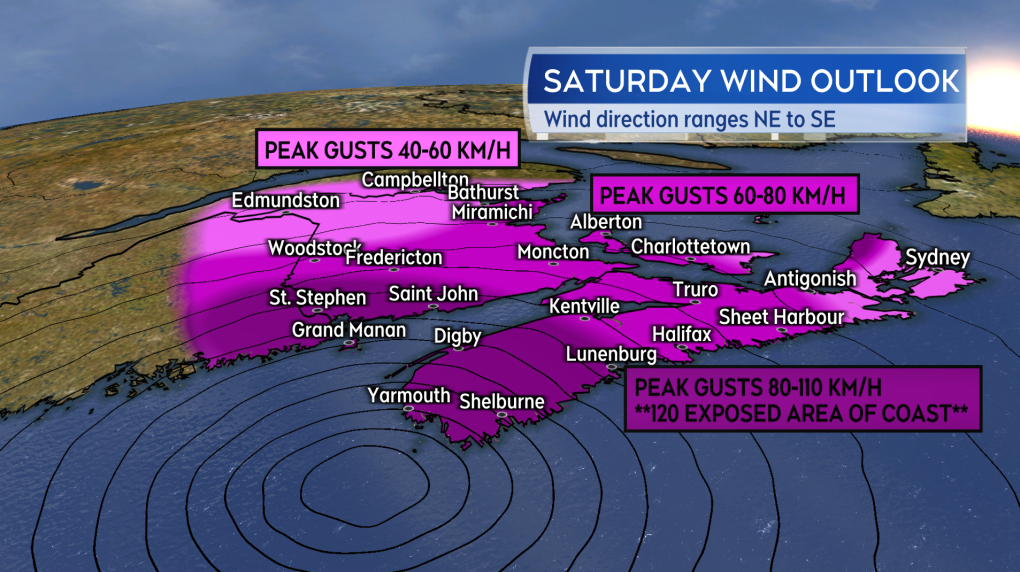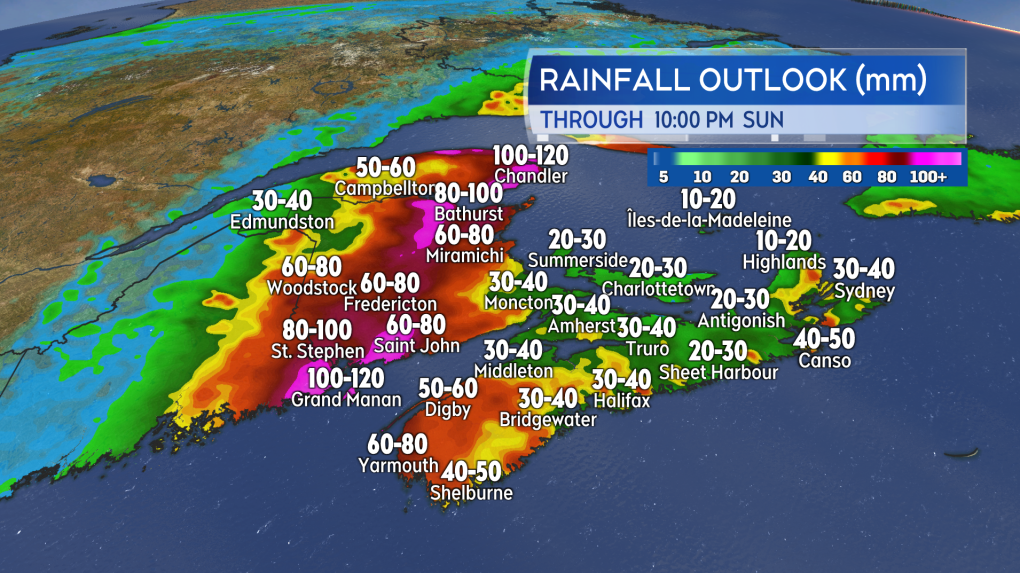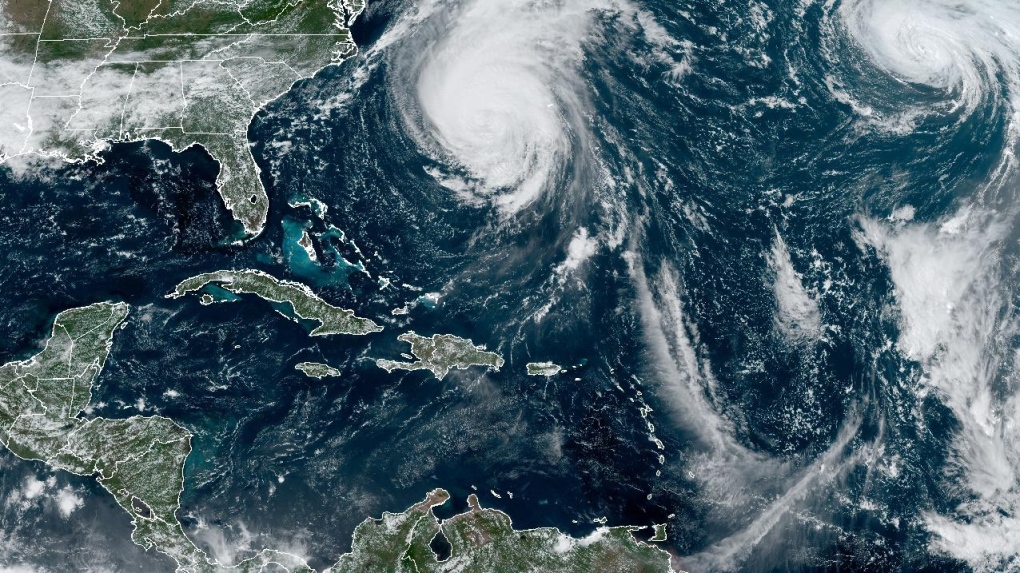Lee is moving west of Bermuda on NASA satellite images as a Category 1 hurricane.
Tornado watches have already been issued Environment Canada For the Grand Manan area and coastal Charlotte region of New Brunswick and the Digby, Yarmouth, Shelburne and Queens areas of Nova Scotia.
“There is a small chance that Hurricane Lee will produce hurricane-like conditions,” the watch said. Wind speeds can reach 120 km/hour.
A tropical storm warning in effect for coastal Saint John and the Bay of Fundy also extended to Moncton and southeastern New Brunswick. In Nova Scotia, a tropical storm watch has been put in place for the Annapolis Valley, western Cumberland/Colchester region, Lunenburg County and western Halifax County. The monitored areas could be affected by sustained winds of up to 60 km/h with gusts of 90 to 100 km/h on Saturday. The weather agency noted that tropical storm watches also indicate a risk of heavy rain that could cause localized flooding.
Hurricane and tropical storm watches have been issued for parts of New Brunswick and Nova Scotia by Environment Canada.
Lee’s latest forecast calls for the storm to approach the waters of the Southern Ocean as a Category 1 storm on Saturday morning. Lee is then expected to strengthen into a tropical/post-tropical storm as it approaches and crosses offshore land areas. The landing point could be southwest Nova Scotia Saturday evening or on the Bay of Fundy coast of New Brunswick early Sunday.

wind
Southwestern Nova Scotia and New Brunswick are expected to experience the strongest winds and thunderstorms on Saturday. Wind speeds in this area sometimes reach 80 to 110 km/hour. Wind speeds can also exceed 100 km/h in northern Inverness County, Cape Breton, due to mountainous terrain. Most other sea areas are expected to peak with wind gusts of 60 to 80 km/h Saturday and early Sunday morning. The wind initially heads northeast then shifts east/southeast during the day.
The greatest risk of power outages will be in southwestern Nova Scotia and southwestern New Brunswick. Power outages cannot be ruled out outside the region. Usually, there will be strong winds and storms for a long time in the sea area, and the trees still have thick leaves, which will increase the force of the wind hitting the area.

Precipitation
The greatest risk of heavy rain will be along and west of Lee’s Path through the region. Currently, this places New Brunswick in the zone. Total precipitation is expected to vary between 60 and 120 mm from southwest to northeast across the province. Most of this rain will fall Saturday afternoon through early Sunday morning. Rainfall totals of 50 to 80 mm are at risk for southwestern Nova Scotia.
High 24-hour totals come with the risk of flooding and flash flooding. There is a risk of further heavy rain in marine areas outside the above areas. In general, other areas are expected to receive around 10 to 40 mm of rain from Lee.

Waves and waves
The large size of the storm will result in greater wave propagation and large waves in offshore coastal areas. Some of the hardest hit areas are expected to be the Bay of Fundy coast of New Brunswick and the Atlantic coast of mainland Nova Scotia. “For the Atlantic coast of Nova Scotia, breaking waves of 4 to 6 meters (15 to 20 feet) are possible,” the Canadian Hurricane Center said on Saturday.
Extreme caution is advised on the beach on Saturday, especially at high tide. The first high tide on the Atlantic coast of Nova Scotia occurs between 9:30 a.m. and 11:30 a.m. The first high tide on the Bay of Fundy coast of New Brunswick occurs approximately between 1 p.m. and 2 p.m.

The public is advised to closely monitor warnings and bulletins issued by Environment Canada and the Canadian Hurricane Center. I will update programming on CTV News Atlantic and cTVnewsatlantic.ca.

“Amateur problem solver. Hipster-friendly alcohol lover. Beer buff. Infuriatingly humble tv geek.”

:strip_icc():format(jpeg)/kly-media-production/medias/4808693/original/081976300_1713760505-page.jpg)




